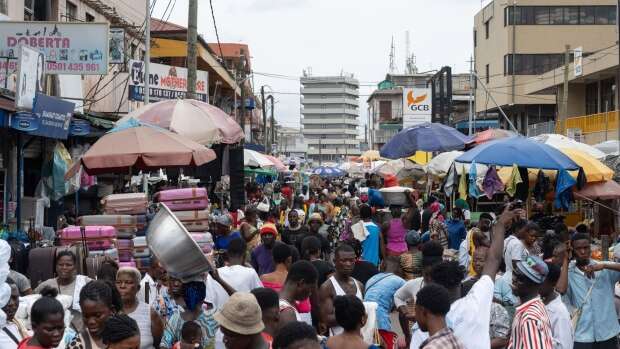Zambia Faces Tough Budget Choices With Drought, Debt Pressures
The government has already revised its growth target for 2024 to 2.3% — an expansion rate that will be among the slowest this century — and could fall below 2%, said Gibson Masumbu, an independent economist.
- Advertisement -
The worst drought in more than a 100 years is testing Zambia to the limit and will require its finance minister to devise an annual budget that can recharge an economy that’s still emerging from a bruising debt restructuring.
The 2025 spending plan Situmbeko Musokotwane will unveil at about 2:15 p.m. in Lusaka, the capital, will be one of the “greatest challenges” he faces in his term, Trevor Hambayi, a financial analyst, said by email.
- Advertisement -
It will pique the interest of investors who agreed to have their debt reworked in recent months. They will be seeking clarity on what the lingering impact of the drought might mean for how much they get repaid in coming years. It will also draw the attention of businesses and households who will want to hear what plan Musokotwane has to revitalize the economy and fix an energy crisis.
- Advertisement -
The government has already revised its growth target for 2024 to 2.3% — an expansion rate that will be among the slowest this century — and could fall below 2%, said Gibson Masumbu, an independent economist.
The El Niño-induced drought is “affecting the entire economy, at a scale never imagined,” he said by text message. It’s cut the staple corn crop by half, led to a surge in costly imports and reduced water volumes in hydropower dams to dangerously low levels causing an energy deficit. Households and businesses have been subjected to outages that can last the entire day.
Many have resorted to alternative energy sources, with diesel use surging 16% in the first half of 2024. Enterprising car-wash operators allow customers to charge their phones while they wait for a fee. Congregants plug in their devices at church while singing over the growl of generators, and shoppers jostle around electrical points at malls to try top up their batteries.
- Advertisement -
The drought has also impacted tax revenues, fueled price increases and hit the currency. Inflation has surged to a near four-year high and the kwacha has depreciated 11% against the dollar since President Hakainde Hichilema declared it a national disaster on Feb. 29.
All this has taken place against the backdrop of a debt revamp.
The government in June reworked nearly $3.9 billion it owed to bondholders. And while it secured some relief, reaching the deal has required it to resume payments in default since 2020. This “means that Zambia is under immense pressure,” Peter Mumba, national coordinator at the Zambia Debt Alliance campaign group, said by phone.
To meet the challenges Musokotwane will use funds from multilateral institutions. The government has sought additional help from the International Monetary Fund and World Bank.
In June, the IMF agreed to lend Zambia an extra $388 million. Hichilema is also hoping for a new catastrophe credit line from the World Bank that could amount to about $140 million.
One bright spot is Zambia’s copper mining industry. Operators including First Quantum Minerals Ltd. have overcome the power shortages with imports. Though that’s come at a higher price, the nation managed to grow first-half copper output by 6.3% compared to a year ago.
Source:norvanreports.com
- Advertisement -


